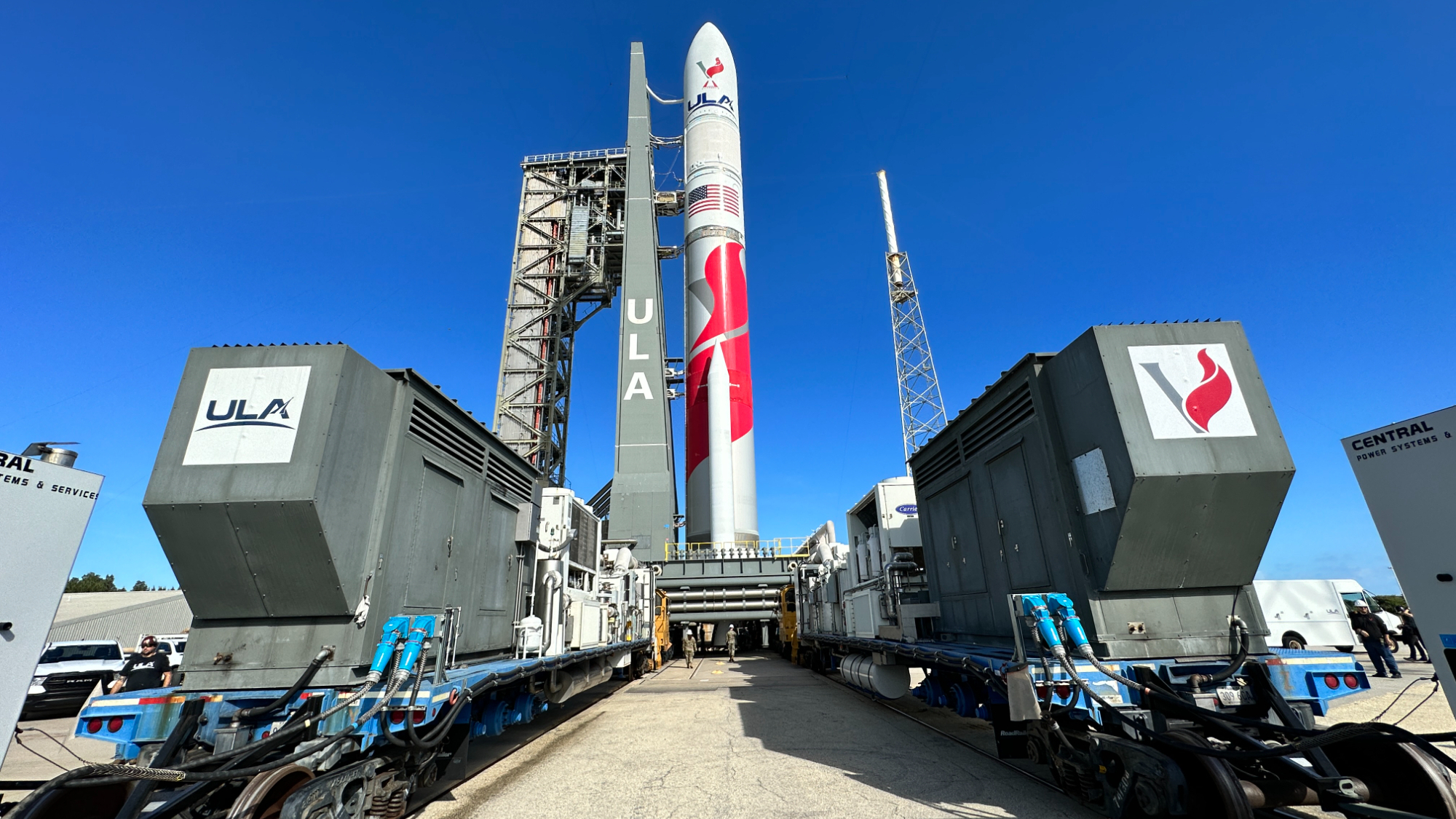
United Launch Alliance's (ULA) new, long-awaited rocket is all set to lift off for the first time ever. But will the vehicle establish itself in a competitive launch market?
The Vulcan Centaur is scheduled to launch from Florida's Cape Canaveral Space Force Station early Monday morning (Jan. 8). Aboard will be the private Peregrine moon lander, part of NASA's Commercial Lunar Payload Services (CLPS) initiative and manufactured by Pittsburgh-based firm Astrobotic.
The launch is a big deal in itself; it could lead to the first successful private moon landing. Conversely, it could cast a shadow over NASA's lunar program and Astrobotic, and bring further delays and questions over the Vulcan Centaur. It is also unusually demanding for a debut launch; the rocket must not only reach orbit, but then kick on and execute a translunar injection burn with its Centaur upper stage.
Related: Facts about ULA's Vulcan Centaur rocket
In addition, the launch comes at a crossroads for ULA. The company was once dominant in the U.S. launch market, notably with its highly reliable Atlas V rocket. Over the last decade, however, the emergence of SpaceX and its reusable Falcon rockets has brought about a transformation in the launch industry. Last year, SpaceX launched 98 times, out of a total of 109 orbital launch attempts from the United States overall.
In another sign of how times have changed, ULA's famous Delta IV Heavy has just a single launch left, expected this spring. The company's transition to its next-gen rocket began years ago, but the path to the pad has not been smooth for Vulcan Centaur. It has suffered numerous delays, including the supply of its BE-4 first stage engines from Blue Origin, Jeff Bezos' aerospace company. An explosion during testing of the rocket's upper stage in March last year set the first flight back yet again.
Despite the delays, the Vulcan order book is looking healthy, and there will be plenty of work ahead if the rocket can get flying.
ULA CEO Tory Bruno said in a call with reporters on Nov. 15 that Vulcan has a backlog of 70 launches for both government and commercial customers. Getting through the Jan. 8 "Cert 1" launch and sending Peregrine toward the moon is a first challenge. If Cert 1 is successful, ULA will need to start ramping up production of the rocket, to allow for two launches per month by the end of 2025.
Beyond this, ULA has a development roadmap to adapt and upgrade Vulcan Centaur. Currently, the rocket is optimized for high-energy orbits, with the powerful first stage taking the Centaur upper stage and payloads almost all the way into low Earth orbit (LEO). However, to launch satellites for constellations such as Amazon's Kuiper broadband network, a smaller, less powerful upper stage would actually allow more payload mass, and therefore more satellites deployed into LEO per mission.
ULA is also working to make the Vulcan first stage recoverable, and the company intends to reuse the variable-thrust BE-4 engines. The company is also working with NASA on an inflatable hypersonic heat shield as part of its reusability efforts.
It will not all be plain sailing, however, with challenges in the more mundane, hidden side of launches. Bruno noted that there are complexities of managing launch infrastructure at both Cape Canaveral and California's Vandenberg Space Force Base, due to increasing launch rates and the shift in range management responsibilities from the government to launch providers. There are also planning and scheduling complexities involved in launch preparations, including the integration of new technologies and coordination with various stakeholders.
Meanwhile, rumors have swirled around ULA, with owners Lockheed Martin and Boeing having put the company up for sale. Ars Technica reported in November that the company was close to selecting a buyer, while the Wall Street Journal reported in late December that the company received buyout offers from Blue Origin and others.
Asked back in November about a potential sale, Bruno said ULA was in "great shape after our transformation and our full, now, many years long, you know, presence in the commercial marketplace. The company is in great shape."
While the first Vulcan Centaur sits on the launch pad, the company's immediate future is somewhat up in the air. The outcome of the launch may have some impact on the progress or terms of a sale.
ULA's CEO however remains openly optimistic about the mission. "This is the end of a multi-year, long journey for us," Bruno said. "We're super excited about it."
The launch is scheduled for 2:18 a.m. EST (0718 GMT) on Monday. You can watch it live here at Space.com, courtesy of NASA.







